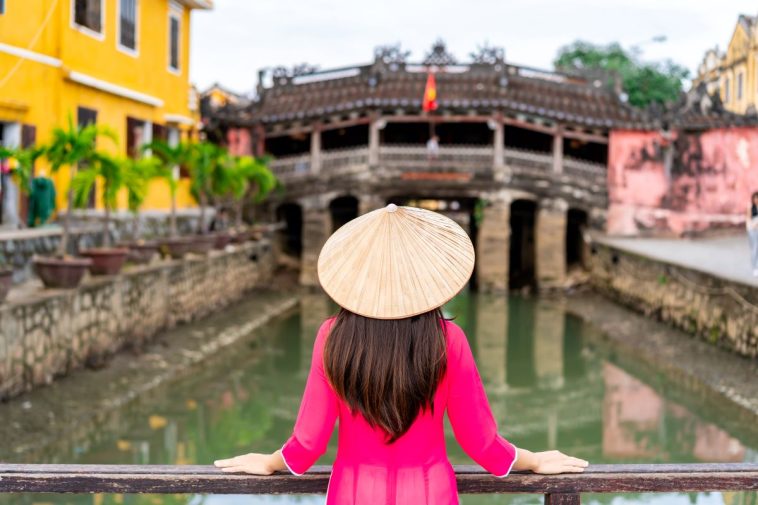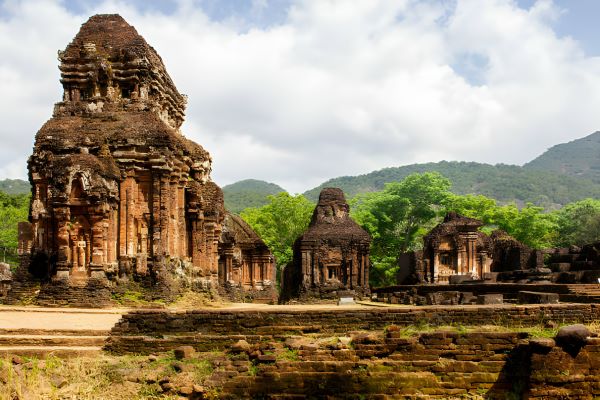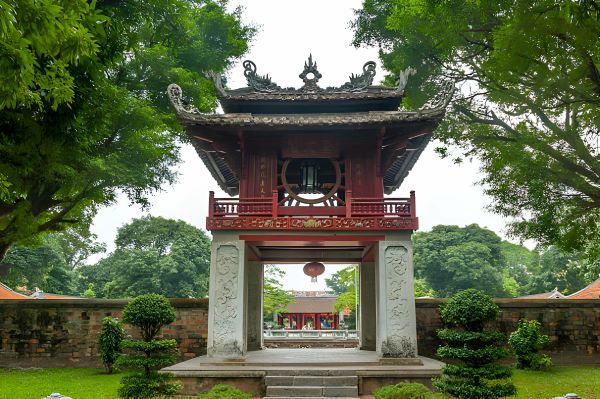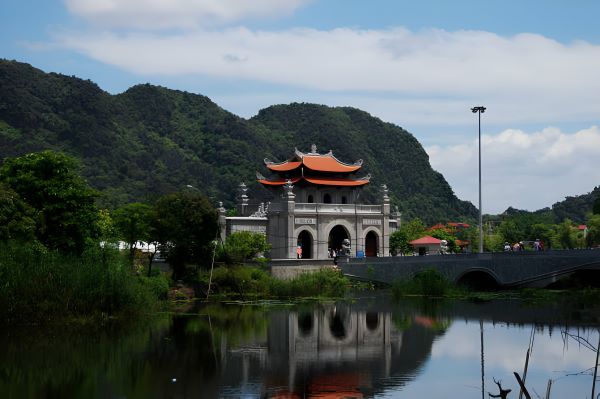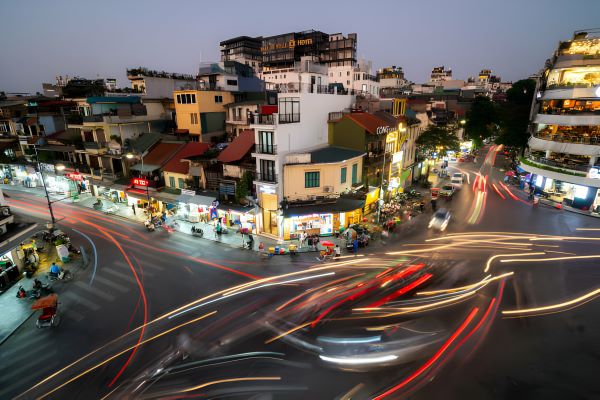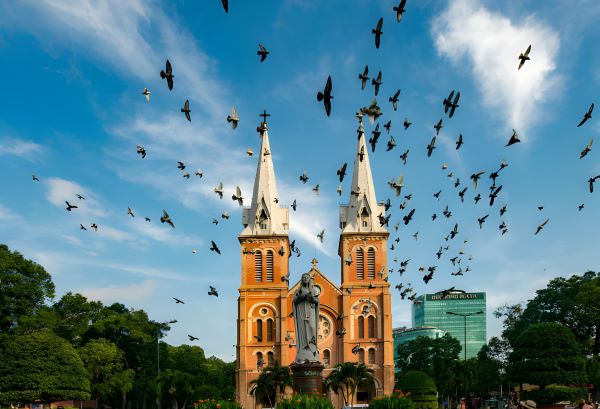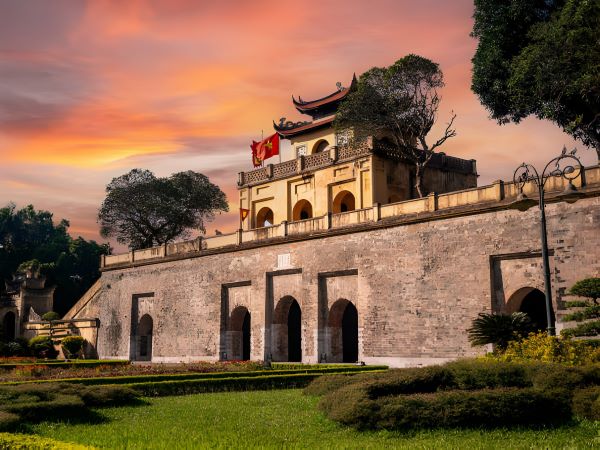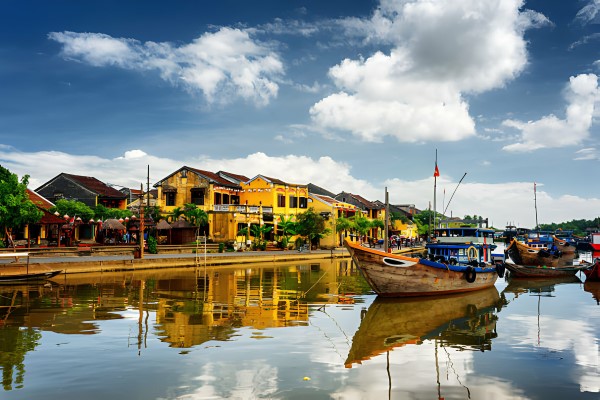For history buffs with a knack for exploration and a keen interest in history, a journey through Vietnam’s rich cultural and historical tapestry, where ancient temples and colonial heritage converge to tell a captivating story, is a treasure trove. From the ancient wonders of UNESCO-listed sites like Hoi An’s Old Town and the Imperial City of Hue to the remnants of French colonial architecture in Hanoi and Ho Chi Minh City, Vietnam’s cultural medley unfolds with each step, offering insights into its past and present. Let’s take a virtual tour, exploring the intricate pagodas, ornate palaces, and atmospheric streetscapes of Vietnam that bear witness to centuries of tradition and transformation in this enchanting Southeast Asian nation.
Ancient Temples and Kingdoms
My Son Sanctuary, Quảng Nam (4th – 14th century)
Venture into the heart of central Vietnam to discover the mystical ruins of My Son Sanctuary, an ancient Hindu temple complex dating back to the Champa Kingdom. Nestled amidst lush greenery in central Vietnam, this UNESCO World Heritage Site is home to a cluster of Hindu temple ruins dating back to the Champa Kingdom.
The My Son Sanctuary stands as a testament to Vietnam’s ancient civilization and spiritual heritage. Explore the intricately carved sandstone structures and marvel at the architectural mastery that once graced this sacred site, offering a glimpse into Vietnam’s rich cultural and religious history.
Temple of Literature, Hà Nội (1070)
The Temple of Literature in Hanoi, Vietnam, is a timeless symbol of the country’s scholarly tradition and cultural heritage. Built in 1070, this historic complex served as Vietnam’s first university, dedicated to Confucius and the pursuit of knowledge.
Wander through its serene courtyards, admire the elegant architecture, and explore the tranquil gardens, where generations of scholars once sought enlightenment. The Temple of Literature stands as a testament to Vietnam’s reverence for learning and its enduring legacy of intellectual pursuit.
Chinese Rule and Independence Movements
Trung Sisters’ Temple, Ha Noi
The Trung Sisters’ Temple in Hanoi, Vietnam, honours the legendary heroines, Trung Trac and Trung Nhi, who led a rebellion against Chinese domination in the 1st century AD. Also known as Hai Bà Trưng Temple is a place of worship and one of several temples of the two Trưng Sisters located near Hoàn Kiếm Lake.
This historic site pays homage to their bravery and patriotism, offering visitors a glimpse into Vietnam’s rich cultural heritage and storied past. Visitors can explore the temple grounds and learn about the sisters’ legacy which is a source of great pride to the country.
Hoa Lu Ancient Capital, Ninh Binh (10th-11th century)
Hoa Lu Ancient Capital, nestled amidst the lush landscapes of Ninh Binh Province served as the political and cultural centre of the country in the 10th and 11th centuries. Today, visitors can explore the remnants of its ancient temples, pagodas, and fortified citadels amidst stunning natural scenery.
Hoa Lu offers a captivating journey into Vietnam’s feudal history and architectural splendour. From the historical aspect, The first king of the Dinh dynasty chose Hoa Lu as his capital in 968 CE after defeating the Chinese occupation. From an architectural aspect, the king had built many palaces, temples, and citadels in the area, remnants of which can still be frequented by curious minds.
French Colonial Architecture
Hanoi Old Quarter
One of the best parts of Exploring Vietnam is to catch a glimpse of the marvellous evidence of French Colonial Architecture. Hanoi’s Old Quarter, a bustling maze of narrow streets and alleys, is the heart and soul of Vietnam’s capital city. Dating back over a thousand years, this historic district is a vibrant tapestry of Vietnamese culture, where ancient traditions blend seamlessly with modern life.
Visitors can explore colourful markets, traditional shops, and ancient temples in each corner and learn the stories of Hanoi’s rich heritage. From savouring street food delicacies to witnessing centuries-old craftsmanship, the Old Quarter offers a captivating journey through time, enchanting travellers with its charm and authenticity, and the abundance of French colonial architecture, resulting in the city’s timeless allure.
Saigon Notre-Dame Basilica, Ho Chi Minh City (1883-1886)
The Saigon Notre-Dame Basilica in the heart of Ho Chi Minh City, stands as an architectural marvel, a prominent landmark and a symbol of Vietnam’s French colonial heritage. Built in the late 19th century with imported materials from France, its striking red-brick façade and twin spires dominate the skyline.
Visitors can admire its Gothic beauty, explore the serene interior adorned with stained glass windows and religious artefacts, and soak in reverence and tranquillity. The basilica is a neo-Romanesque masterpiece, embodying both the spiritual devotion of the Vietnamese people and the cultural legacy of a bygone era.
Cultural Preservation and UNESCO Heritage Sites
Imperial Citadel of Thang Long, Ha Noi (11th century)
Exploring the rich history of Vietnam is incomplete without visiting the most revered UNESCO Heritage Sites of the country. The Imperial Citadel of Thang Long is a UNESCO World Heritage Site and a testament to the city’s rich history. Dating back to the 11th century, this ancient complex served as the political and cultural centre of the region for over a millennium.
Visitors can explore its well-preserved structures, including palaces, gates, and temples, and marvel at the architectural grandeur that once symbolized Vietnam’s imperial power. The Citadel offers a fascinating glimpse into the country’s dynastic past and remains a symbol of national pride, showcasing the enduring legacy of Vietnam’s royal heritage.
Hoi An Ancient Town (15th-19th century)
Hoi An Ancient Town, nestled along the Thu Bon River in central Vietnam, is a captivating blend of historical charm and cultural richness. This UNESCO World Heritage Site is over 2,000 years old and renowned for its well-preserved architecture, including ornate Chinese temples, centuries-old Japanese merchant residences, and elaborate bridges.
Visitors can wander through its narrow streets adorned with colourful lanterns, explore bustling markets, and sample delectable cuisine at riverside restaurants. With its enchanting ambience, vibrant arts scene, and warm hospitality, Hoi An invites travellers to step back in time and immerse themselves in the timeless beauty of Vietnam’s cultural heritage.
Exploring the history of Vietnam provides a nuanced understanding of its cultural evolution, resilience, and the fusion of various influences that have shaped the nation into what it is today. Each site offers a glimpse into Vietnam’s rich and diverse heritage. For more travel-related blogs and updates, stay tuned to our website.

